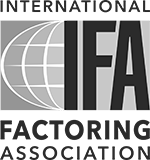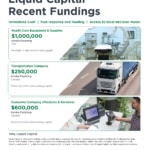Beyond Survival Mode: How Changing Your Mindset Transforms Your Business
Your beliefs limit or amplify your abilities
For decades, the world’s most elite runners accepted an unbreakable truth: no human could run a mile in under four minutes. It was impossible. The human body couldn’t sustain that pace. Medical experts had studied it. Sports scientists had calculated it. The issue was settled.
On May 6, 1954, Roger Bannister crossed the finish line in 3 minutes and 59.4 seconds.
What happened next revealed the power of limiting beliefs. John Landy broke Bannister’s record just 46 days later. By the end of 1957, sixteen more runners had run right past the “impossible” barrier. Today, the four-minute mile is the standard for competitive middle-distance runners.
The barrier was never physical: it was psychological. An entire generation of world-class athletes had the capability but lacked the belief. They never even tried.
We’re not suggesting you can dunk a basketball by believing you can. Absolute limitations exist. But you (and your business) are capable of accomplishing far more than you think, were it not for the limiting beliefs you hold.
These beliefs don’t just affect individual performance; they can determine the fate of entire civilizations.
A war of worldviews
In the 16th and 17th centuries, Spain dominated the world’s oceans. Their treasure fleets brought streams of gold and silver from the New World. By every measure, Spain should have remained the world’s dominant power.
An upstart island nation called Britain dismantled Spanish supremacy and built the largest empire in human history.
This wasn’t just a military victory: it was a triumph of worldviews. Spain’s economy operated under the principle of mercantilism. In the mercantilist view, wealth was a finite “pie”, and prosperity meant claiming the largest slice before others could take it. Influenced by this belief, Spain accumulated treasure, protected trade routes, and fought to control existing resources.
Britain embraced a different belief system: capitalism. Instead of hoarding finite wealth, they focused on creating new wealth through innovation, productivity, and technology. While Spain’s mercantilist mindset led them to see every economic interaction as zero-sum competition, Britain’s capitalist approach turned resources into tools for growth … growth at a rate the world had never seen.
The Spanish collected gold. The British invented steam engines.
Spain protected what they had. Britain multiplied what was possible.
The naval battles were the visible manifestation of this deeper philosophical conflict. The real war was won in the minds of each nation’s leaders: their beliefs about how wealth is created and what growth looks like.
Spain’s mercantilist beliefs superimposed an artificial scarcity that led to stagnation. Britain’s growth mindset unleashed the Industrial Revolution and transformed the world.
The mercantilism trap in modern business
This same philosophical battle plays out in businesses every day. Many entrepreneurs operate from a mercantilist mindset that artificially constrains their growth:
The mercantilist business owner thinks:
- “There are only so many customers in my market”
- “If I spend money on growth, I’ll have less money in the bank”
- “I need to protect my cash flow at all costs”
- “I should only use my own money because financing is risky”
- “My competitors are reason I cannot grow”
The growth-minded business owner thinks:
- “I can create new markets and expand the customer base”
- “Strategic investment in growth multiplies my returns”
- “Cash flow is a tool, not the goal”
- “Smart financing amplifies my capabilities”
- “I can grow faster than the rising tide”
Research confirms this difference in belief and perspective matters. Companies that embrace a growth mindset report 64% higher productivity and 58% improved employee engagement, with 80% of executives linking this mindset directly to profits.
What makes this insight more compelling is the observation that the difference isn’t in the resources available to each type of business owner. They have access to the same opportunities, the same markets, and the same financing options. The difference is in their beliefs about what’s possible and how growth works.
From survival mode to strategic mode
Most business owners encounter invoice factoring during a crisis. A major client is paying slowly. Payroll is due. A big opportunity requires upfront investment they don’t have. In desperation, they discover factoring as a way to convert unpaid invoices into immediate cash.
This crisis introduction creates a powerful association: factoring equals survival mode.
But this “emergency fire extinguisher” perception represents mercantilist thinking. It views factoring as a finite resource to be used sparingly, a necessary evil that depletes your wealth by charging fees.
The growth mindset sees something different.
Strategic factoring isn’t about surviving cash flow gaps: it’s about converting your accounts receivable into growth capital. Instead of waiting 30, 60, or 90 days for payment, you access that capital immediately and deploy it for expansion while your competitors are still waiting to get paid.
Consider Global Aviation’s transformation. When CEO Carm Borg implemented strategic factoring, he wasn’t solving a crisis: he was unlocking capacity. “We doubled our growth every year, continuously,” he explains. The company scaled from 550 employees to 2,500, increased from 20 airline contracts to 55, and grew annual revenue from $6 million to $24 million.
This wasn’t survival mode. This was exponential growth made possible by a shift in thinking about what accounts receivable represent.
The compound effect of strategic factoring
When Ridgeline Manufacturing faced seasonal cash flow challenges, they could have chosen the mercantilist approach: reduce operations during slow periods, lay off workers, and conserve cash. Instead, they used factoring to offer 90-day terms to dealers, encouraging early orders that kept the manufacturing facility running year-round.
“Sure, factoring is higher interest, but we build it into the cost of our product and it’s seasonal,” explains co-owner Nick Newman. “So if I pay more than I would with a bank, but can factor for just a few months a year, that’s a big bonus.”
This strategic approach created compound benefits:
- Retained skilled workers year-round
- Maintained relationships with suppliers
- Built deeper partnerships with dealers
- Increased production capacity
- Strengthened competitive positioning
The “cost” of factoring became an investment in competitive advantage.
Breaking free from self-imposed constraints
Dr. Carol Dweck’s research on growth mindset reveals that our beliefs about our abilities directly impact our performance. This applies powerfully to how business owners think about their growth constraints.
The mercantilist mindset creates artificial scarcity:
- “I can only grow as fast as my cash flow allows”
- “Taking on debt or factoring fees reduces my profitability”
- “I should only pursue opportunities I can self-fund”
- “Growth beyond my current capacity is too risky”
The growth mindset recognizes that strategic financing amplifies capabilities:
- “I can accelerate growth by converting receivables into immediate capital”
- “The ROI from growth opportunities exceeds financing costs”
- “Smart leverage lets me pursue multiple opportunities at once”
- “Strategic risk-taking is needed for breaking through plateaus”
Summit Retail Solutions exemplifies this transformation. Founders Ted Hope and his partner moved from viewing factoring as an expensive necessity to seeing it as a strategic amplifier. By factoring $3 million over 65 fundings, they built the capacity to handle multiple large retail clients at once.
“With Liquid Capital’s help, we solidified our company through growth to maturity,” explains Hope. “Teaming with Liquid Capital was the best thing our company could have done to allow us to grow and prosper.”
Their sales more than doubled, going from $1.4 million to over $4 million in just 18 months. This didn’t come from having more resources, but from changing their beliefs about how to deploy the resources they had.
The mindset shift in action
Here’s how the philosophical transformation looks in practice:
From Protection → Investment
Mercantilist thinking: “I need to protect my cash reserves”
Growth thinking: “I need to deploy capital strategically for maximum return”
From Scarcity → Abundance
Mercantilist thinking: “There’s only so much business available”
Growth thinking: “I can create new opportunities and expand the market”
From Risk Aversion → Strategic Risk
Mercantilist thinking: “Financing costs reduce my profits”
Growth thinking: “Strategic financing amplifies my growth potential”
From Reactive → Proactive
Mercantilist thinking: “I’ll use factoring when I have to”
Growth thinking: “I’ll use factoring to stay ahead of opportunities”
Get started with the growth mindset
If you’re ready to shift from survival mode to strategic growth mode, here’s how to begin:
Step 1: Audit your beliefs
Honestly examine your current thinking:
- Do you view financing as a last resort or a strategic tool?
- Are you protecting cash or deploying capital for growth?
- Do you see yourself as indistinguishable from your competitors or are you investing in meaningful points of difference?
- Are you reacting to cash flow gaps or proactively creating capacity?
Step 2: Calculate the opportunity cost
Consider what growth opportunities you’ve declined due to cash flow timing:
- Larger contracts you couldn’t pursue
- Equipment purchases you’ve delayed
- Staff hires you’ve postponed
- Market expansion you’ve avoided
Step 3: Reframe factoring strategically
Instead of viewing factoring fees as costs, calculate them as investments:
- What returns could you generate with immediate access to receivables?
- How much faster could you grow with consistent working capital?
- What competitive advantages would reliable cash flow create?
- How would accelerated growth compound over time?
Step 4: Test the new mindset
Start with selective factoring to experience the strategic difference:
- Factor your largest or slowest-paying invoices
- Use the capital for specific growth initiatives
- Track the ROI on your factoring investment
- Build confidence in the strategic approach
What belief will you choose?
Every business owner faces the same choice that confronted Spain and Britain centuries ago: Will you operate from scarcity or abundance? Will you horde or will you grow?
The mercantilist approach feels safer in the short term. Hoarding cash, avoiding financing costs, and protecting existing resources seems prudent. But this mindset creates artificial constraints that limit growth and threaten long-term survival.
The growth approach requires courage but delivers compound returns. By viewing factoring not as an emergency measure but as a strategic amplifier, you transform accounts receivable from passive assets into active growth capital.
Air Oasis owner Kaleb Zeringue discovered this when he shifted from viewing factoring as a necessary evil to seeing it as a competitive advantage. “Liquid Capital gave me the cash flow to look for bigger jobs, sign bigger contracts and make better profits,” he explains. “Instead of doing a residential job where I’m making, say, $1,000 per day, I’m averaging $5,000 per day at Marriott while using and paying the same amount of labor.”
This 5x improvement in daily profitability didn’t come from working harder or finding better customers. It came from changing his beliefs about what was possible with the resources he already had.
Your empire awaits
The Spanish Empire fell not from lacking resources, but from clinging to limiting beliefs about how wealth is created. Their mercantilist mindset turned abundance into a self-imposed scarcity.
Britain rose to global dominance not from having more gold, but from embracing a growth mindset that turned existing resources into exponential expansion.
Your business has the same choice. You can continue operating from survival mode, protecting cash and reacting to opportunities when you have enough reserves. Or you can shift to strategic mode, using factoring to convert receivables into growth capital and staying ahead of opportunities while competitors wait to get paid.
The resources you need already exist: they’re sitting in your accounts receivable. The question is whether you’ll view them through the lens of scarcity or abundance.
The empires of tomorrow are being built today by business owners who understand that growth isn’t about hoarding the most resources. It’s about believing that more is possible and taking strategic action to make it happen.
Are you ready to build your empire?
Continue your factoring education
This article is the seventh installment in our 2025 Strategic Factoring Series. If you found this mindset shift valuable, explore our previous articles to develop a comprehensive understanding of how factoring can fuel your business growth:
- January 2025: Say “Yes” to Larger Orders – How invoice factoring enables you to take on bigger opportunities without cash flow stress
- February 2025: Time Your Growth – Using factoring to capitalize on seasonal demand and opportunities
- March 2025: The Early Payment Advantage – Leveraging factoring to capture supplier discounts and lower your costs
- April 2025: Beyond Duct Tape: How Invoice Factoring Creates Both Workplace Harmony and Market Leadership
- May 2025: Building Your A-Team – Using steady cash flow from factoring to hire and retain top talent
- June 2025: The Multi-Contract Strategy – Managing multiple large projects successfully with invoice factoring
Visit our blog to catch up on any articles you missed and strengthen your strategic approach to business financing.





